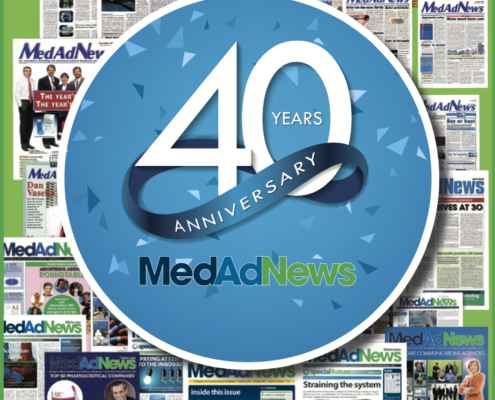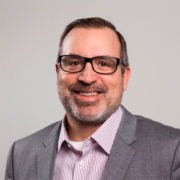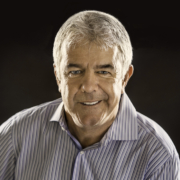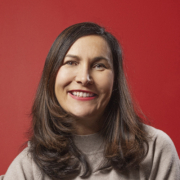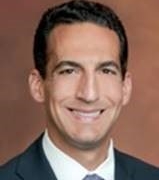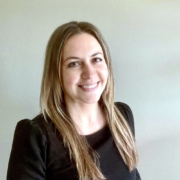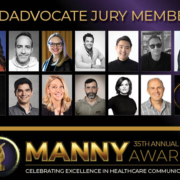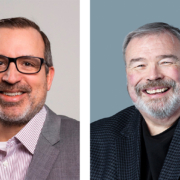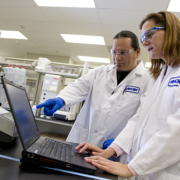40 years later, business of healthcare changed in very personal ways
40 years later, business of healthcare changed in very personal ways
Technology has transformed the industry, significantly expanding pharma pipelines, facilitating more engagement, and empowering patients.
By Maria Fontanazza • [email protected]
When Med Ad News was launched during September 1982, there was no Google, no smartphones, no apps that with a tap of the finger brought you access to nearly the entire world. The term “blockbuster drug” was non-existent, but billion-dollar drugs would soon enter the picture and remain a goal that pharmaceutical companies would pursue for the next 20-some years, until the rise of generics forced them to shift their strategy. Now 40 years later, life without touchscreens is unimaginable. Fast-tracked by the pandemic, technology has facilitated innovation with tremendous speed, forever changing the trajectory of healthcare. And in our conversations with industry stakeholders, they all pointed to technology — whether from a communications perspective or drug development standpoint — as being the key driver in addressing challenges and in the continued advancement of the industry.
“Not only has technology evolved dramatically, but the ability for pharma companies to better engage with healthcare providers and patients has changed dramatically, and the ability for agencies to deliver smart marketing cost effectively is a huge change,” says Mike Myers, co-founder and managing director, CrowdPharm. With patients staking a greater claim in their own care, there is much more emphasis on empowerment and engagement, and pharma companies and marketing agencies have pushed to meet these needs by leveraging technology in new ways. This includes building community and deeper connections between patients, providers, and across the health continuum via technology platforms.
“There’s an industrywide shift to help foster greater patient knowledge, self-advocacy and empowerment, yielding increased expectations of convenience and transparency in health-related experiences. This, along with increased measurement of outcomes at every level has mandated truly transformative technological approaches. In turn, this has led to significant changes in the business of life sciences and how we enable modern marketing and health education today — with digitization leading the way,” says Kim Johnson, global CEO, Ogilvy Health.
“The principal client challenge and agency challenge remains the same — to get good care into a patient. It’s just the steps you go through are more complex,” says Jay Carter, executive VP, director of business development, AbelsonTaylor. “This is not about creating an oral tablet that is chemically related to another tablet that we know works for hypertension, and putting it out on the market, talking to doctors, leaving samples, and getting patients to take it, and then counting the money. Instead, it’s about finding the patient, communicating with them to create the need, facilitating the patient and the physician interaction, and ultimately driving use. It’s highly personalized, and it’s highly specialized.”
Data: it’s all about metrics and creating custom experiences
“We have data being generated from devices and digital therapies, and on both the research and development side, and the commercialization and real-world side; we have a literal explosion of data types and data sources,” says Dennis Urbaniak, executive VP digital therapeutics, Orexo US. “There’s an entire industry built around gathering, storing, and maintaining health information that is being applied in multiple facets.”
The shift from a one-size-fits-all approach to reach patients to a personalized strategy has pushed the industry to expand how, when, and why it uses data. “We’re seeing the role of data and technology now permeate everything that the healthcare industry does. The continued evolution of becoming more consumer focused, really thinking about patients as consumers is a key trend that we’re seeing,” says Wendy Carhart, chief communications, culture and purpose officer at Real Chemistry. “I think that personalization fits in here from an industry perspective as well, and we know that not all patients are the same, so how do we as an industry evolve to treat them differently, reach them differently, and reach them where they are?”
As privacy laws become stricter, the ability to reach patients where they are will be a bigger hurdle and one that will push marketers to change their approach. “I think you’ll see incentives for consumers and healthcare providers to opt in because ‘I want your data, so if you’re not going to give it to me, I’ll pay you.’ As a result, consumers are going to receive pharmaceutical information that they want versus based on search
[results],” Myers says.
Despite the upcoming challenges, the omnipresence of data continues to help creatives, pharma marketers, and folks in the wider healthcare sphere gather meaningful insights and improve health outcomes — and the use of data continues to advance and have a wider reach. “I believe we’ll see the experience economy meeting health care in a model that is increasingly consumer-driven, virtual, and personalized, with data being shared through a wide array of digital services, apps, and content,” Johnson says. “Virtual health is here to stay, as consumers are more and more in control of their health decisions, and hospitals and systems are reflecting that demand for a smarter and more personalized approach. These trends in health and customer experience open pathways for greater creativity to support positive health outcomes through diversified digital experiences. The onus is on us as marketers to use the smart technology, logic, and automation that are available to help solve the real health challenges we’re seeing — from unmet patient needs across the health continuum, to easing the mental health burden of HCPs to increasing access to health education.”
For pharma marketers, one of the keys to successful use of data is the ability to translate it into information that can be interpreted and deployed quickly, Urbaniak says. “It’s all about metrics and prospective metrics. I don’t need them to bring in a mass of data scientists. I need someone who can talk to me and tell me, ‘the goal for this idea is to accomplish this end result.’ In the beginning, that’s the dialogue that I need to have — even before we get into these big strategy sessions and deep dives.”
Of course, questions remain regarding whether data overload could become an issue and potentially lead to wasted resources or poor decision making. “How much do HCPs trust the data and how much do they trust it in making healthcare decisions? And how will doctors manage additional information that is not managed by a clinical source?” pointed out Michael McNamara, managing director of McKinney Health. The generation and extrapolation of actionable data is a process of continuous improvement, experts agree.
The evolution of medicine
The era of blockbuster drugs is long gone, and pharma companies have shifted their sights to addressing much smaller markets. “It’s a huge shift, because if your target market is 100,000 people, pharmaceutical companies aren’t going to spend as much promotionally as if the target market is 2 million people,” Myers says. “Not only have we focused on smaller disease states and those in true need of care as an industry, but that’s also changed the way that agencies and clients interact, because there were days when teams of 20-30 product managers were working on one product, and now one product manager might be overseeing two or three brands.”
The evolution of technology has spurred significant progress in developing medications and more targeted treatment for diseases. “We’ve seen a massive increase in the understanding of the molecular and cellular basis of disease, and therefore a massive increase in the potential targets for drug therapy, which has driven a real need for scientific credibility — and in some cases very complicated mechanisms of action of drugs and the interaction with some disease processes,” says Neil Matheson, chairman, Atlantis Health. “So there’s been a shift from what I call ‘pure marketing and promotion’ much more towards scientific and medical/clinical education as a backbone to promotion, with a lot more emphasis on the scientific side of the business and the clinical side of the business — especially in areas that are complex like oncology, rare diseases, genetically based diseases, and of course the impact of mapping the human genome and the possibilities it provides in terms of gene therapy is massive.”
“I’m here in the oncology group, and there are so many first-in-class technologies coming to the marketplace: drug device combinations; CAR-T therapies are amazing not just in terms of what they do but also how they go about re-engineering a patient’s T cells,” says Chris Esposito, director, oncology specialty training, Janssen Pharmaceutical. “Just the advancement in technology has been remarkable. At its current pace, it will be interesting to see from the customer standpoint, how they stay on top of this new and exciting information.”
Johnson has been in awe of the magnitude of scientific progress and innovations across so many therapeutic categories. “All of us have benefited from these advancements in one way or another — from more comprehensive antibiotics to minimally invasive surgical procedures,” Johnson says. “Experiencing exciting breakthroughs in heart disease and stroke research and watching universal hepatitis C treatments evolve to the point where the word ‘cure’ can now be used has been nothing short of extraordinary. The improvements in treating cystic fibrosis have also been remarkable to witness. And, of course, the significant advances in targeted cancer treatments that have improved the lives of so many. Getting closer and closer to the promise of personalized medicine year after year with advanced diagnostics in the genomics and proteomics space is truly inspiring.”
Myers predicts the focus on personalized medicine will continue. “They’ll tweak a drug down to the DNA based on who you are, or they’re going to adjust a cocktail of medicines; they’re going to be able to look at you and get data on you and improve that outcome,” he told Med Ad News.
Carter agrees, stating that developing extraordinary treatments and even finding cures that were previously thought impossible for certain diseases are now becoming an attainable goal. “We’re getting better at understanding specifically what is going on in a disease state and therefore we can create medications that address them directly. We’re working on a gene therapy for hemophilia B, and it’s not outside the realm of contemplation that we could cure hemophilia B. Those victories have happened over and over again,” he says. “In 1982, the industry supported many unmet needs in primary care: better products for hypertension, asthma, COPD, hyperlipidemia, and diabetes became available. That required a different kind of promotion — mass marketing. Today, with the needs set for each of those disease states, except arguably for diabetes, pharma has evolved to meet more orphan or rare disease, whether that be uncommon disease states or rare cancers addressed by our evolving understanding of the precise reason for a specific cancer. Both open up the need state for virtually every disease: patients (and their caregivers, as many rare diseases are in children) don’t know anything about their disease and are literally aching for connection that the industry can bring them.”
Communication and making the connection
Industry’s efforts to build community, authenticity, and create deeper connection with patients and healthcare providers is an ongoing process that is placing more emphasis on inclusion and a holistic health approach. “We’ll be talking to people with a chronic disease not just about their disease, but also about how to get their stress level down and improve their mental health,” McNamara says. “And the data from wearables and electronic health records will marry it together to get the fuller picture. Physicians will have to evolve and realize that their relationship with patients can’t be to treat them and then send them out. It must look at the individual holistically.” This, McNamara points out, is where technology enters the picture in helping address the entire patient versus one aspect.
According to Matheson, the industry must also continue to understand the relationship between healthcare providers, patients, and caregivers, as well as the pressures they face.
“Caregivers play a critical role in a lot of healthcare decision making and they’re part of the continuum. The industry has started to become patient focused but there’s still limited understanding in how patients interact with physicians and how caregivers support those interactions,” he says, adding that there needs to be an understanding of the constraints that physicians face as well. “Physicians have a limited amount of time to learn and actually understand what is going on. The industry must understand the pressures on the audience they’re communicating with in terms of their time and adapt to that and maintain an empathetic approach.” He states this tactic is critical to managing a healthy relationship, especially in the age of more virtual and digital interaction.
“There are number of different ways you can communicate with people depending on what they need, how you’d like them to feel, and what you are trying to address,” Urbaniak says. “And as a marketer, you have to pay attention to functional and emotional as a standard, know some of those triggers, and be able to map those together — which is a lot of fun for a marketer because it’s quite different from the traditional model of drug launches. It also forces you to think very differently and learn a lot of different things. Most people in the industry would be motivated and excited by that.”
“The reality today is that you account for so much more than just the product and the disease state. This idea of understanding the healthcare ecosystem has really come to the fore. Understanding the business of health care — in whatever space you happen to play, whether working in the academic, medical, or community setting, you need to understand that healthcare ecosystem and all the various stakeholders,” Esposito says. “It’s about reacting to the complexity of the healthcare system with organized teams that can help patients get access to medicines. We’re talking about potential cures and lifesaving therapies. That’s exciting. The innovation on the therapeutic front is probably what gets me out of bed the most every day. The first drug that I sold as a sales rep was for toenail fungus and now we’re selling therapies that extend life beyond lung cancer, solid tumors and blood tumors. It’s a great time to be in medicine.”
| Maria Fontanazza is the director of content, Med Ad News and PharmaLive.com. |

